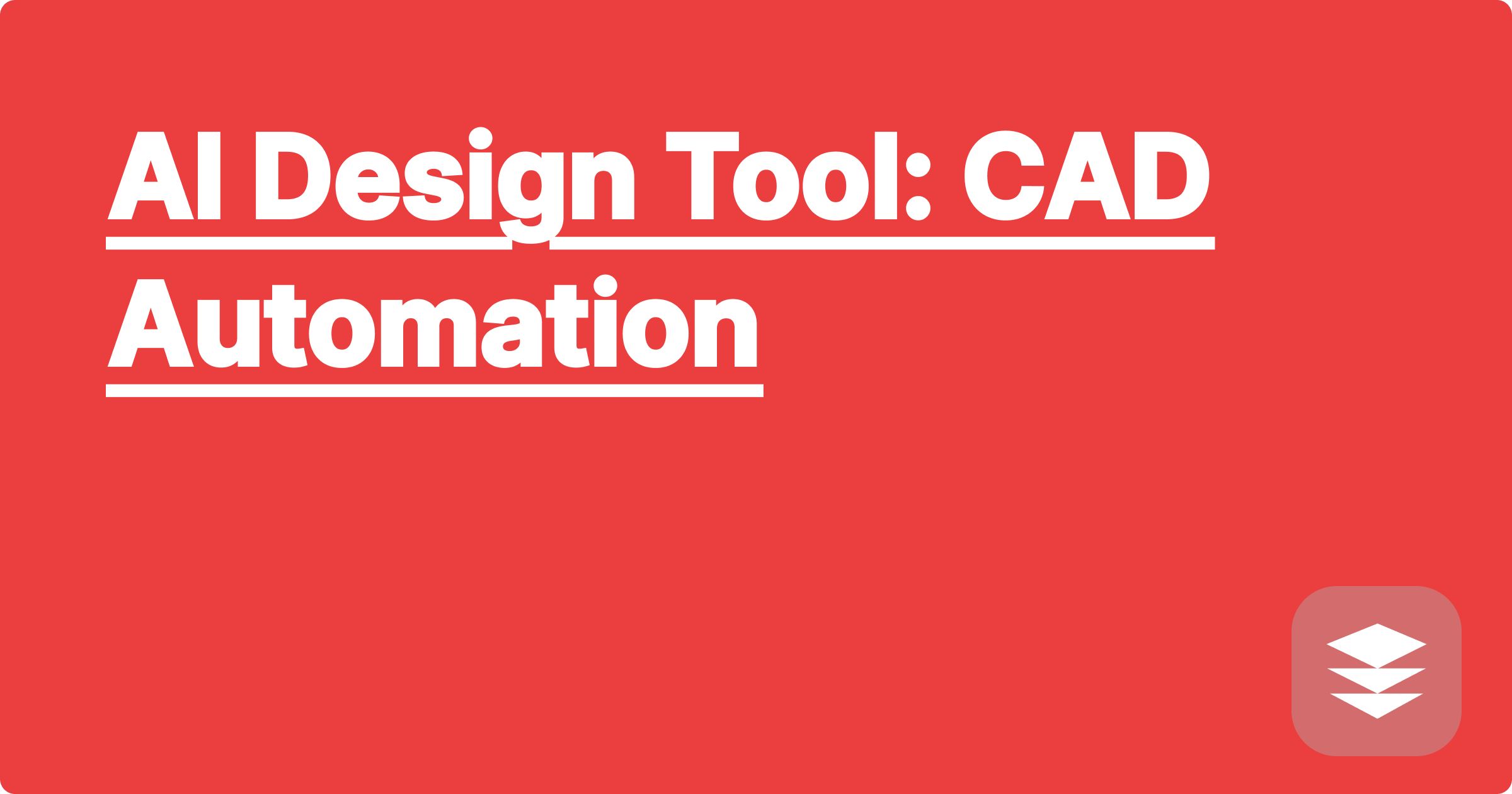
The world of STEM is demanding. Long hours in the lab, complex problem sets, and the constant pressure to innovate can feel overwhelming. But what if there was a way to streamline your workflow, boost your productivity, and even unlock new research avenues? Artificial intelligence is rapidly transforming STEM fields, offering a powerful suite of tools to help students and researchers alike. This isn't just about familiar names like ChatGPT; a whole ecosystem of specialized AI tools is emerging, ready to revolutionize how we learn and discover. This blog post will explore how you can leverage these AI-powered tools, including lesser-known gems, to navigate the complexities of STEM, specifically focusing on AI-driven CAD automation and its potential to reshape design processes.
For STEM students and researchers, time is a precious commodity. Juggling coursework, research projects, and personal commitments requires efficient time management and effective learning strategies. AI can be your secret weapon in this battle, offering personalized learning experiences, automating tedious tasks, and providing insightful data analysis. Imagine having a virtual AI partner, a GPAI, to help you strategize your learning, manage your time, and even assist with literature reviews. This isn't science fiction; it's the reality of AI-powered learning in the 21st century. We'll delve into the practical applications of GPAI and other cutting-edge AI tools to help you maximize your potential and achieve academic success.
Computer-Aided Design (CAD) is fundamental to many STEM disciplines, from mechanical engineering to architecture and even molecular biology. However, traditional CAD workflows can be time-consuming and require significant manual effort. Creating complex 3D models, generating detailed drawings, and ensuring design consistency across different iterations can be a bottleneck, especially for large projects. Furthermore, traditional CAD software often requires specialized training and expertise, limiting accessibility for some students and researchers. The need for repetitive tasks, such as creating standard components or adapting existing designs, further adds to the time burden and can stifle creativity. These challenges highlight the need for more efficient and automated CAD solutions.
AI is transforming CAD by automating tedious tasks, accelerating design processes, and empowering users with new capabilities. AI-powered CAD tools can automate repetitive tasks like generating basic shapes, creating detailed drawings from 3D models, and even optimizing designs for specific performance criteria. Imagine using an AI tool to automatically generate variations of a design based on different parameters, freeing you to focus on evaluating the results and making informed decisions. Tools like generative design algorithms can explore a vast design space, identifying innovative solutions that a human designer might overlook. Furthermore, AI can assist in identifying potential design flaws early in the process, reducing costly rework later on.
Integrating AI into your CAD workflow can be surprisingly seamless. First, identify the specific tasks that consume the most time or present the biggest challenges. These could include generating standard components, creating detailed drawings, or optimizing designs for specific performance criteria. Next, research AI-powered CAD tools or plugins that address these specific needs. Many existing CAD software packages are now incorporating AI features, while specialized AI tools are also emerging. Once you've selected a suitable tool, start with a small pilot project to familiarize yourself with its capabilities and limitations. Begin by automating simple tasks and gradually expand your usage as you gain confidence. For example, you could start by using an AI tool to generate standard components or create basic 3D models from 2D sketches. As you become more proficient, you can explore more advanced features like generative design or design optimization.
Consider a mechanical engineering student designing a robotic arm. Traditionally, this would involve hours of painstaking work in CAD software, creating each component and joint individually. With AI-driven CAD tools, the student can simply specify the desired range of motion and payload capacity, and the AI can automatically generate a range of potential designs. The student can then refine these designs based on specific requirements, significantly reducing the time spent on tedious modeling tasks. In another example, an architect designing a building can use AI to optimize the building's energy efficiency by analyzing factors like sunlight exposure, wind patterns, and building materials. The AI can suggest modifications to the building's design to minimize energy consumption, leading to a more sustainable and cost-effective design.
Beyond CAD automation, AI tools can be invaluable for general academic success in STEM. GPAI, your virtual AI partner, can be a game-changer. Use GPAI to schedule study sessions, break down complex assignments into manageable chunks, and even generate practice quizzes based on your course material. For example, GPAI can analyze your calendar and suggest optimal study times based on your availability and energy levels. It can also track your progress and identify areas where you need to focus more attention. Beyond GPAI, explore specialized AI tools like Wolfram Alpha for complex calculations and problem-solving, or tools like Semantic Scholar for literature reviews and research. These tools can save you countless hours and empower you to delve deeper into your chosen field.
Finally, remember that AI is a tool, not a replacement for human ingenuity. Use AI to augment your skills and knowledge, not to replace them. By strategically integrating AI into your workflow, you can unlock new levels of productivity, creativity, and academic achievement. Start exploring these powerful tools today and discover the transformative potential of AI in STEM.
AI for Simulations: Virtual Labs
AI Study Buddy: Personalized Learning
AI Homework Helper: Get Unstuck
AI Design Tool: CAD Automation
AI Flashcards: Efficient Learning
AI Equation Solver: Math Made Easy
AI Lab Assistant: Data Analysis
AI Note Taker: Organize Your Notes